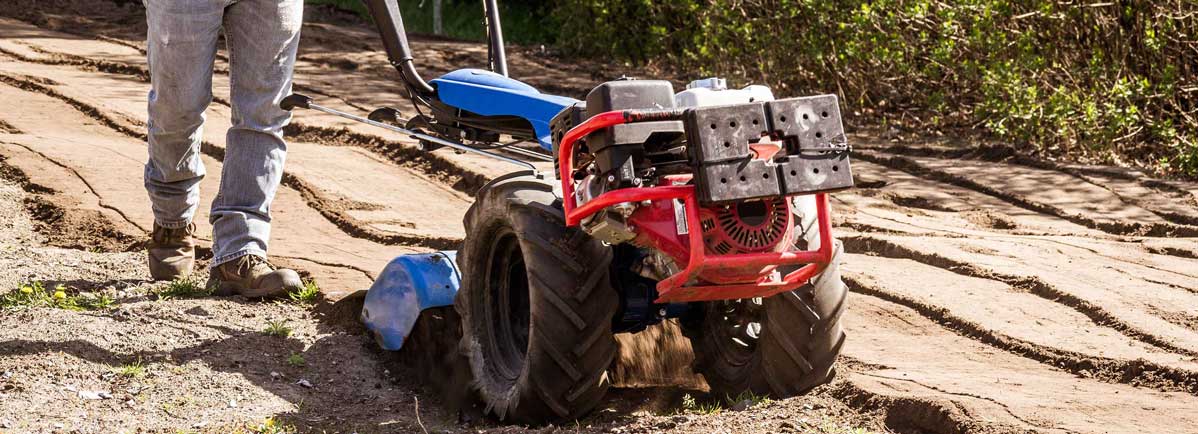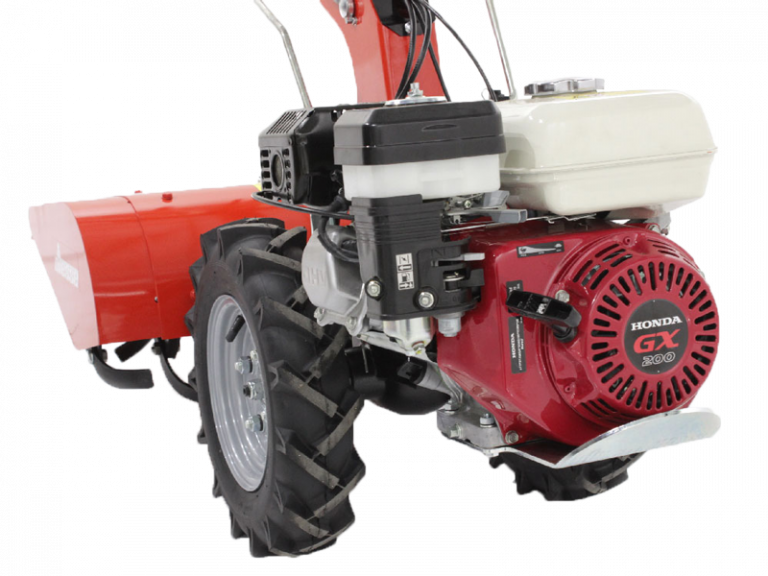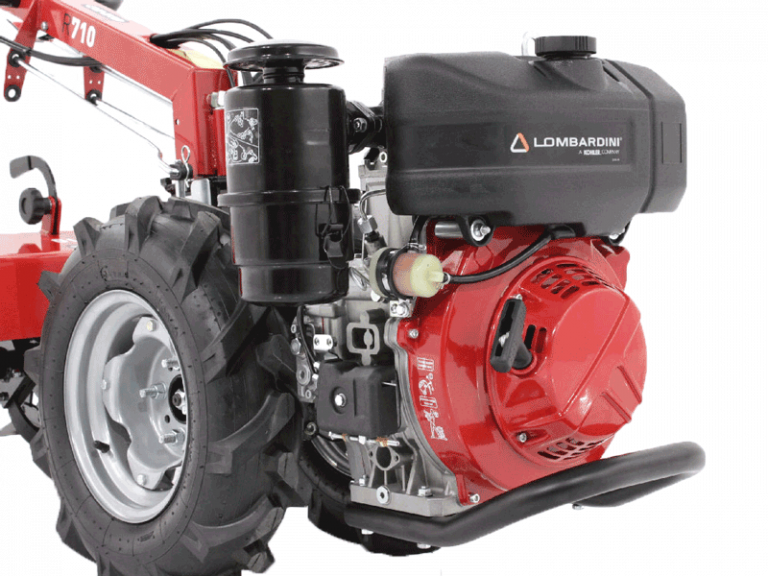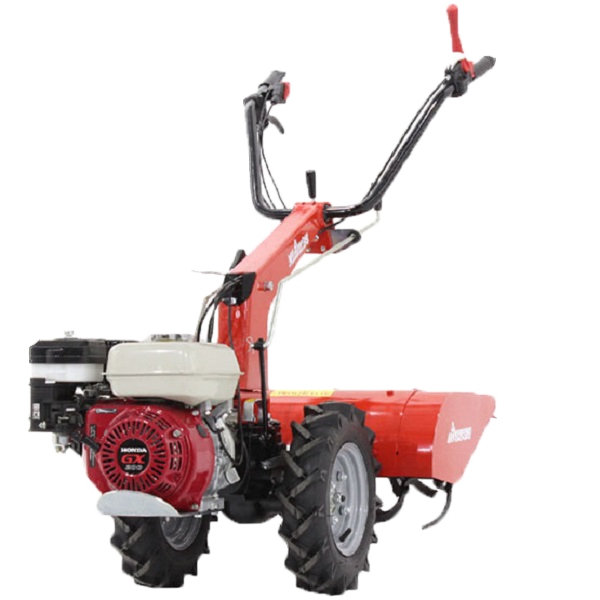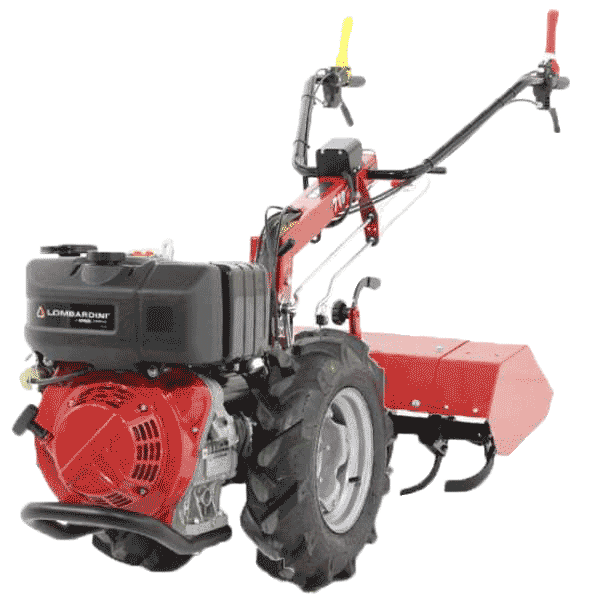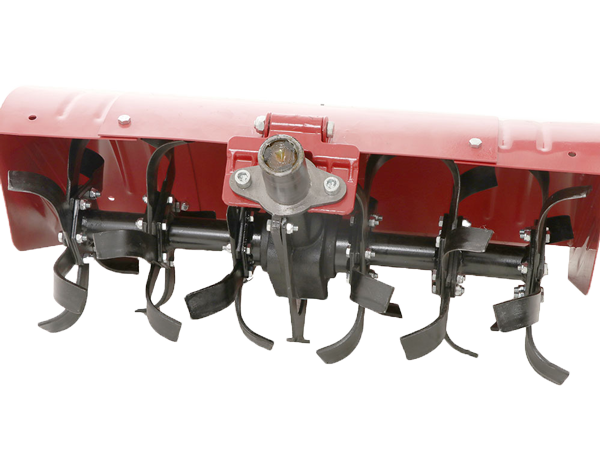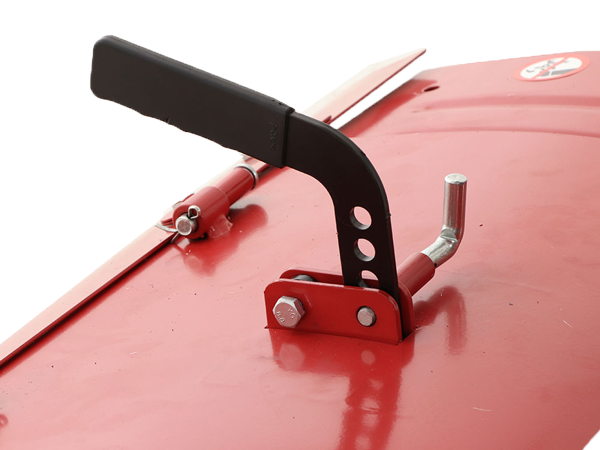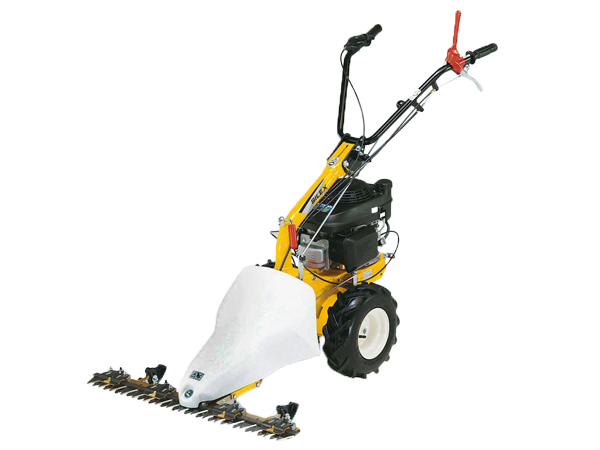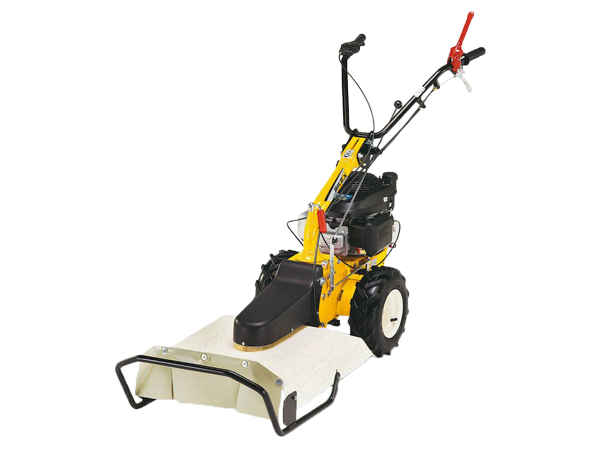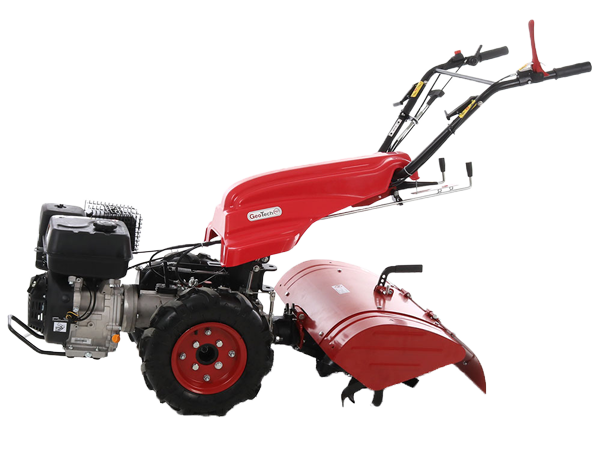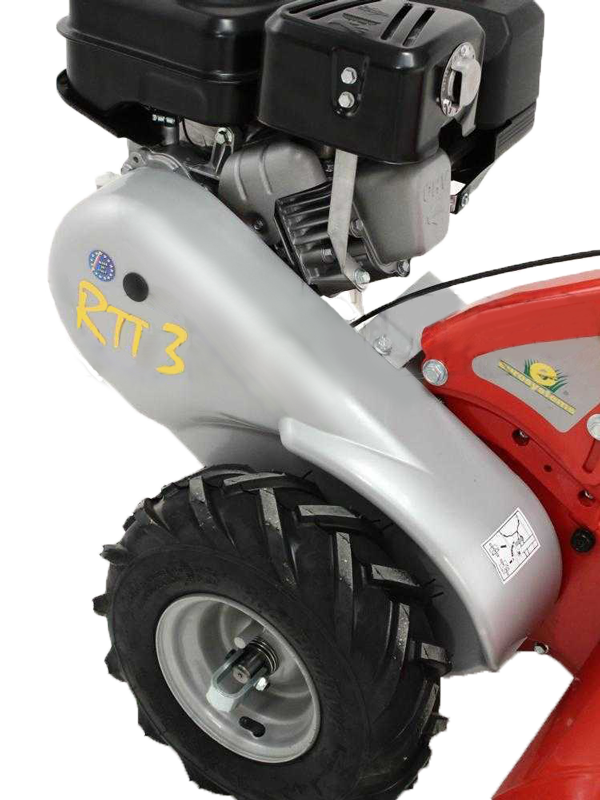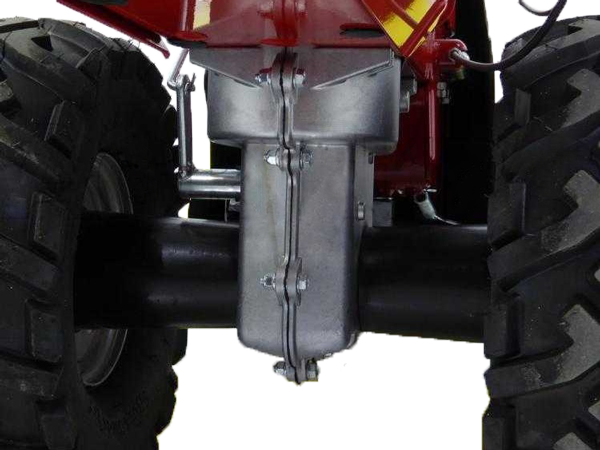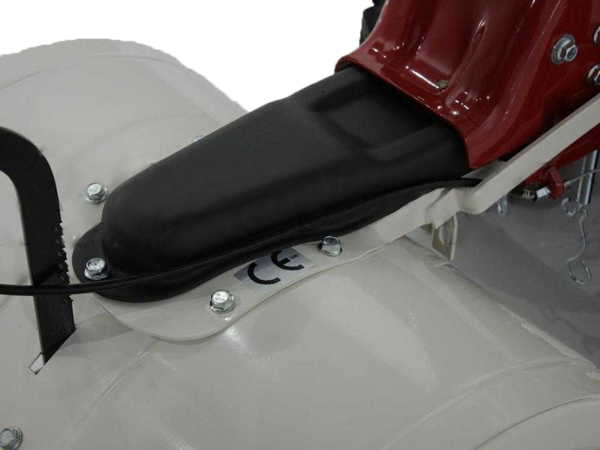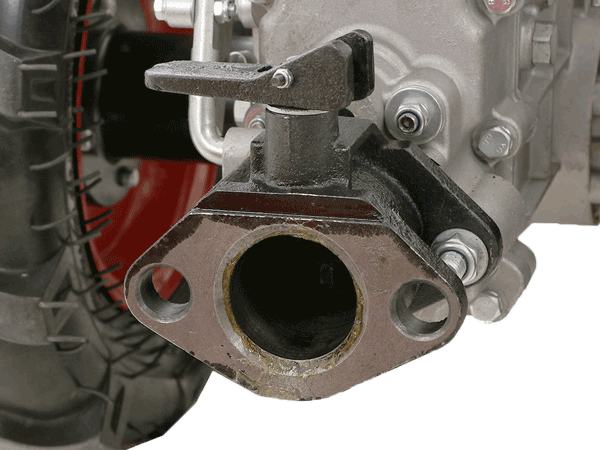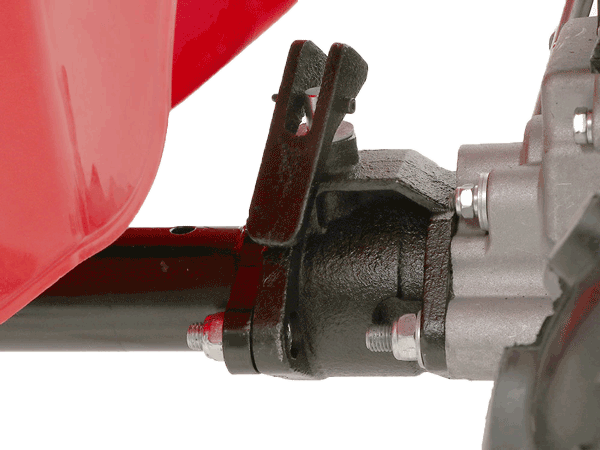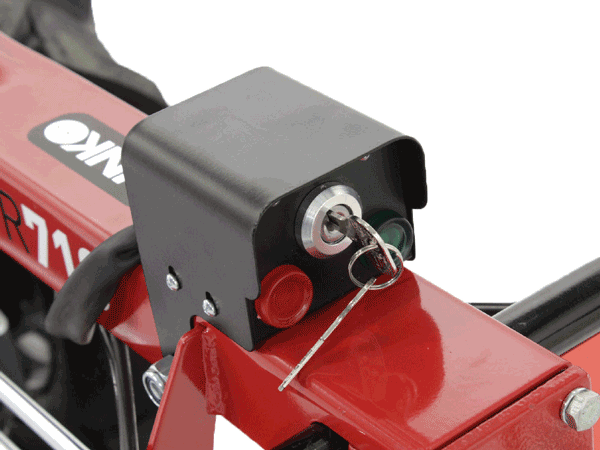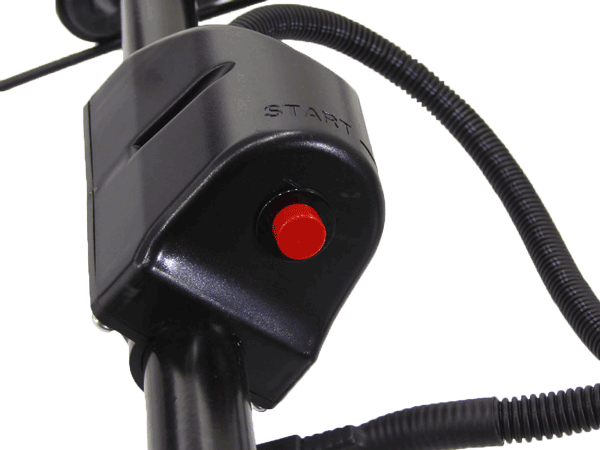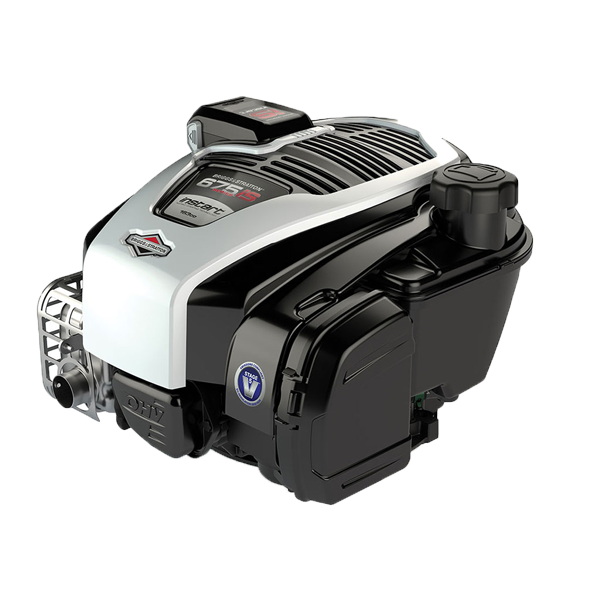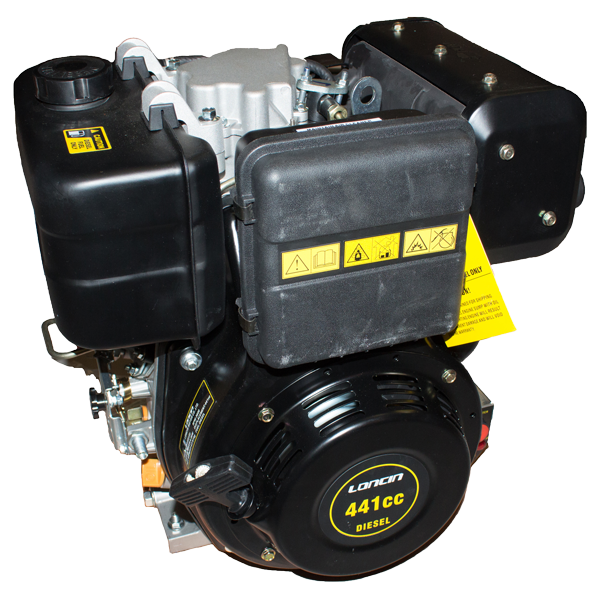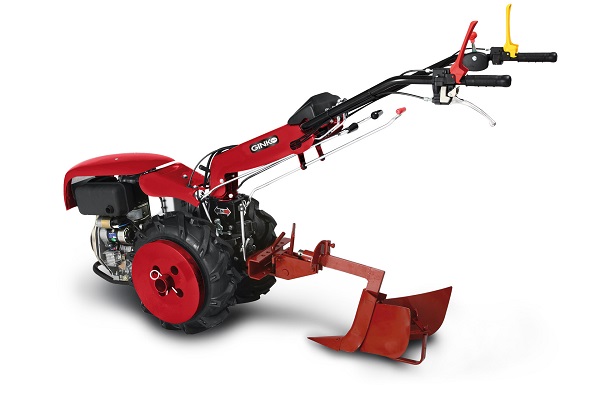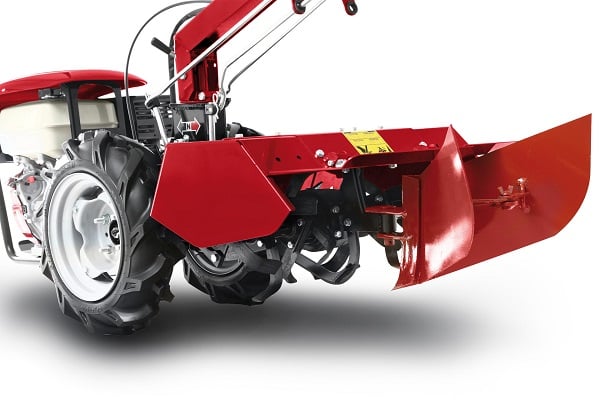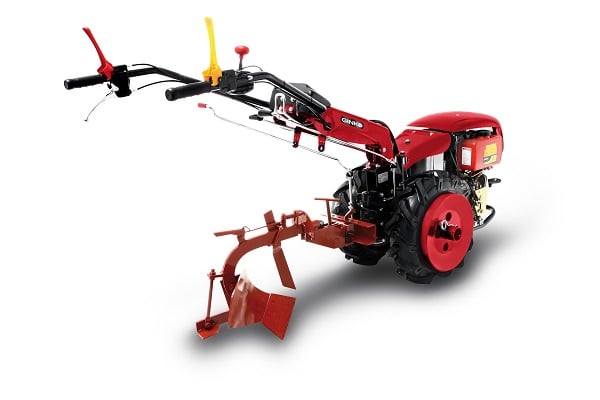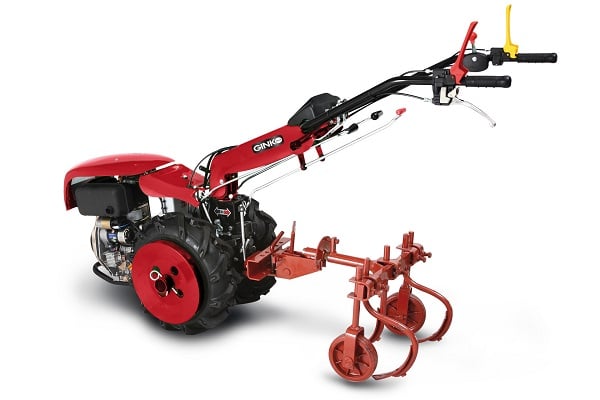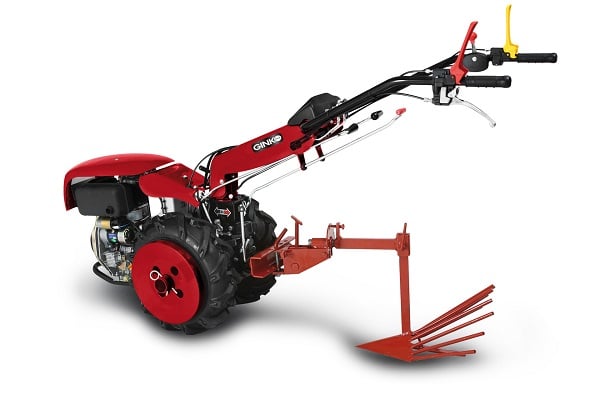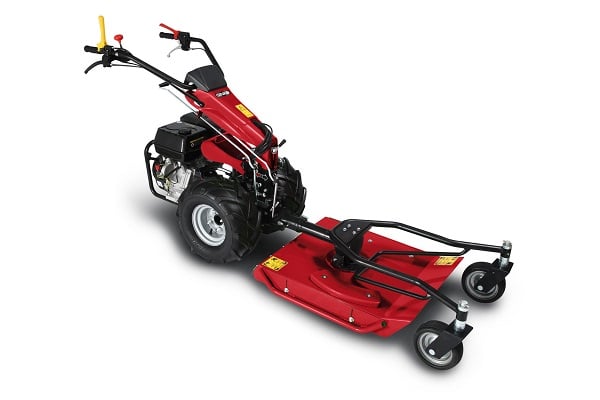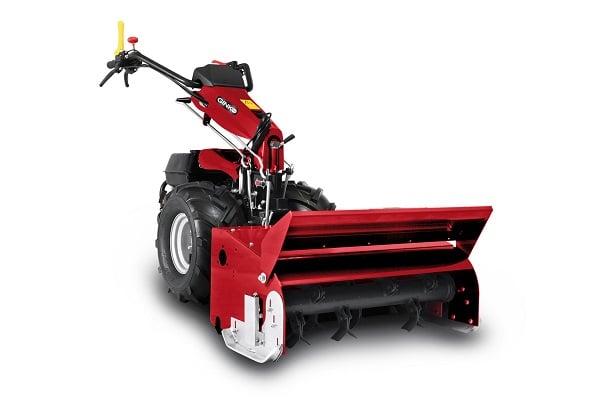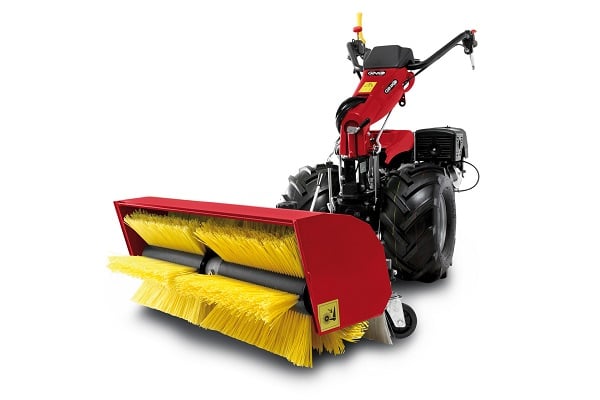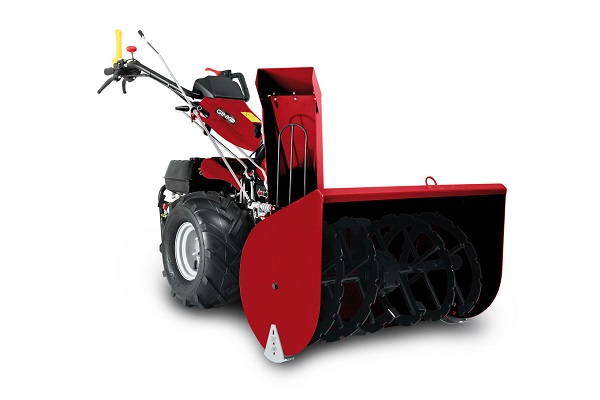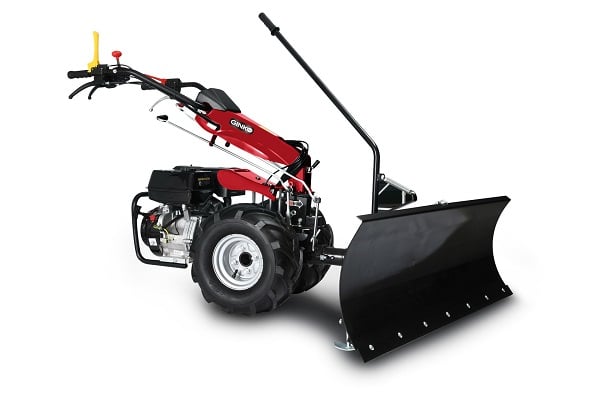The Complete Guide to help you choose the Best Two-wheel Tractor
by the Real Experts of Equipment for Soil Tilling and Care
CONTENTS
1. Introduction
The two-wheel tractor is a very versatile for soil tilling. Throughout this purchasing guide, we will try to understand which are the most important elements to assess when choosing the best two-wheel tractor.
Before getting to the issue itself, however, it is necessary to analyse the main differences between a two-wheel tractor and a garden tiller, since these two machines are often mistaken for each other.
Obviously, this premise does not apply to experts in the field (who are well aware of these differences), but to those users who are approaching the world of tilling for the first time because they need to sow their first seeds in a small vegetable patch, and are therefore looking for the right tool for this purpose.
Both machines consist of an engine body and a handlebar with a couple of steering handles where the control levers are located.
The main difference lies in the way in which the motion of the machine and the element performing the tilling work are engaged.
In the garden tiller, the motion and the milling operation are both performed by the same element: the hoes. When the motor is switched on, the hoes begin to rotate forward, causing the machine to move at the same time.
On the other hand, in a two-wheel tractor, it is the two wheels that determine the motion, while the milling operation is carried out by the tiller attachment located behind the wheels.
We therefore have two separated elements with distinct controls and, therefore, with two different engagement levers. The two-wheel tractor can therefore be driven even without the tiller being connected.
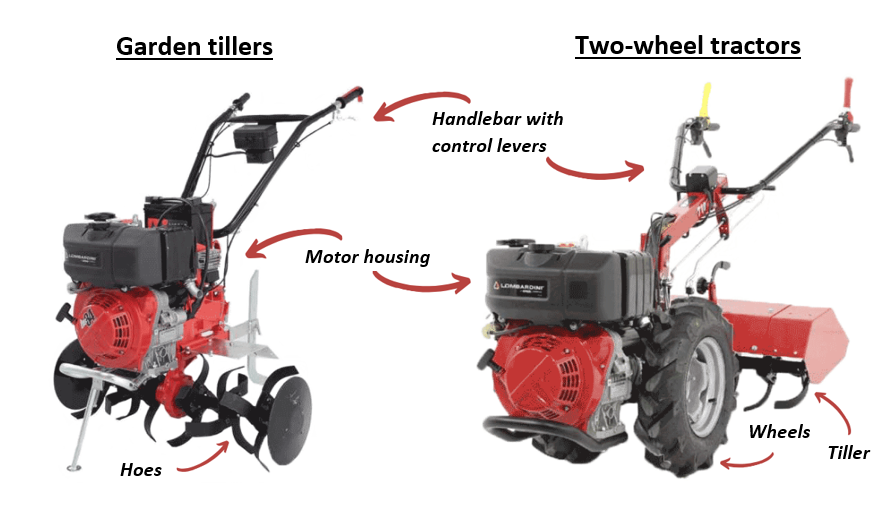
As far as the garden tiller is concerned, the fact that it does not have wheels but only tillers means that it can only carry out the task of tilling the soil.
On the other hand, the two-wheel tractor – thanks to the possibility of replacing the tillers with other accessories – can also carry out other types of work (shredding, mowing grass, and more).
These are just the main differences, of course there are others: for more information, please refer to the last section of this guide or the specific article.
2. Power supply
The two-wheel tractor mounts a 2/4-stroke engine and can therefore only be powered by petrol, fuel-oil mix or diesel.
There are no electric or battery-powered two-wheel tractors on the market.
This is because the two-wheel tractor is a rather heavy machine to which an attachment is always connected in order to carry out a specific operation.
The two-wheel tractor can either tow the attachment or transmit the motion to it (as we will see later).
It therefore needs a certain amount of power in order to operate and this can only be generated by a 2/4-stroke engine.
2.1 Petrol two-wheel tractors
Petrol two-wheel tractors (with 4-stroke engines) are the most widespread on the market. The category includes all types of machines, both in terms of size/height (small/light, medium or heavy series) and versatility (in addition to those that only perform milling, there are models that can also carry out other types of work, as in the case of multitool two-wheel tractors).
Whatever features may be sought, a petrol two-wheel tractor can be an excellent choice for both hobby users (i.e. those with rather limited needs) and others looking for a more professional machine.
2.2 Diesel two-wheel tractors
Diesel two-wheel tractors are generally of medium or heavy series with gear transmission entirely in oil bath (the best type) and are all multitool. To encompass these characteristics in a single concept, we can say that the best two-wheel tractor (or the “real” two-wheel tractor) is indeed the diesel one.
Generally, the diesel engine is a suitable choice for those who need a machine that is expected to last despite fairly heavy use, and for those looking for a working tool that is always ready for use, even after long periods of non-use. One of the many advantages of this type of engine is that it has lower fuel consumption than a petrol engine.
The diesel two-wheel tractor is a necessary choice for working on large areas of land as it is a high-quality, sturdy and reliable machine.
3. The robustness
The robustness plays a very important role in a two-wheel tractor, to the point where it is usually used as a classifier for this type of machinery.
The robustness is not simply the weight of the machine (kg), but rather the result of a combination of a number of different characteristics such as:
- the engine power (number of horsepower and/or displacement)
- the transmission type
- the number of gears
- the width of the tiller
- the maximum working extension.
We will deal with some of these characteristics in further detail in the next section.
In the meantime, given all these factors, we believe it is useful to make the following classification of two-wheel tractors to simplify understanding for the user:
| Horsepower | Transmission type: | Number of gears | Length of the tiller | Maximum extension | |
| Light series (NO multitool) | from 5 to 6,5 HP | Belt drive/chain drive | 1+1 or 2+1 | from 45 to 60 cm | up to 300 m2 |
| Small series (multitool) | from 5,5 to 6,5 HP | Belt drive/chain drive/ Gear transmission in oil bath | 1+1 or 2+1 | from 50 to 55 cm | up to 300 m2 |
| Medium series (multitool) | from 6 to 8 HP | Gear transmission in oil bath | 2+1 | from 55 to 65 cm | up to 500 m2 |
| Medium/Heavy Series (multitool) | from 8 to 10 HP | Gear transmission in oil bath | 3+2 | from 65 to 75 cm | up to 1000 m2 |
| Heavy series (multitool) | from 10 to 14 HP | Gear transmission in oil bath | 3+3 or 4+3 | from 70 to 80 | over 1000 m2 |
Hobby users (or who makes a limited use of it), will usually opt for a small/light series two-wheel tractor; if you need a sturdier machine for intensive use, a medium or heavy series two-wheel tractor is the most suitable choice.
4. The tillers
Focusing exclusively on milling work, it should be pointed out that a two-wheel tractor works more on the surface than a garden tiller, but can also refine the soil better (if the soil has already been worked and tilled).
Smaller width tillers (up to 50-55 cm) allow you to pass fairly easily between rows, while larger width tillers (up to 80 cm) allow you to effectively work a larger area in a single passage.
The tiller of the two-wheel tractor is always enclosed, as it is protected by a sheet metal cover, and this, in addition to greater safety for the operator, also guarantees greater protection for the row crop (in the garden tiller, on the other hand, the tiller is usually fitted with a protective carter).
The tillers may vary according to:
- the number of tines ➡ are generally 2 or 3 per side and, if the overall width is to be reduced, the outer ones can be removed; it is also possible to vary the milling depth by adjusting the spur on the protection cover;
- consistency ➡ this depends on the type of gearbox/transmission fitted and the robustness degree of the machine; the stronger the transmission and/or the heavier the machine, the greater the consistency and therefore the effectiveness of the tillers.

Tiller with 6 tines 
Spur for working depth adjustment
5. The multitool two-wheel tractor
As mentioned above, multifunctionality is typical of those two-wheel tractors which, thanks to the various fitted interchangeable accessories, are able to carry out several jobs.
The user who is about to buy a two-wheel tractor should definitely start from the actual working needs to identify the best machine, in particular whether or not a tool that allows to extend its functionality beyond the milling operation is actually needed.

Multitool two-wheel tractor – sickle bar 
Multitool two-wheel tractor – flat lawn mower
Accessories should always be mounted in the same dedicated compartment on the machine, but depending on their function they can be used in one or the other direction:
- standard position – the attachment is mounted to the rear of the engine and wheels; this is the case with towed attachments, such as the tiller or the plough;
- reverse position – the accessory is mounted to the front of the engine and the wheels; in this case, the two-wheel tractor will drive the attachment, as in the case of the flat lawn mower or the sickle bar.
The reversibility of a two-wheel tractor is achieved by rotating the handlebar 180°. Reversible two-wheel tractors therefore have gears in both directions.
All reversible two-wheel tractors are by definition multitool, but the opposite is not necessarily true: for example, there are multitool machines that allow the use of several attachments but only in the standard direction, i.e. they can only be mounted to the rear of the equipment, in the same direction as the running direction.

Standard position 
Reverse position
6. The importance of the transmission
The type of transmission of a two-wheel tractor plays an important role in classifying the level of the machine (hobby or heavy-duty). The transmission can be belt or gear-driven.
Belt drive
The belt drive is only found on small/light series two-wheel tractors and withstands a low to medium level of use. We can find several belt drive combinations, in which the type of transmission from the engine to the central machine body may be different from the final drive from the central machine body to the equipment:
- belt-driven and chain-driven
- belt-driven and gear-driven

Side belt transmission 
Final chain drive

Central gear drive 
Final belt drive
Gear transmission in oil bath
As already pointed out, the gear transmission in oil bath is by far the most robust and is universally acknowledged as the best for a two-wheel tractor.
It is the most traditional type of transmission, but at the same time the most solid and the most well-structured.
It withstands long working sessions even on the most extensive soils and is present in all top-level machines, both medium and heavy.
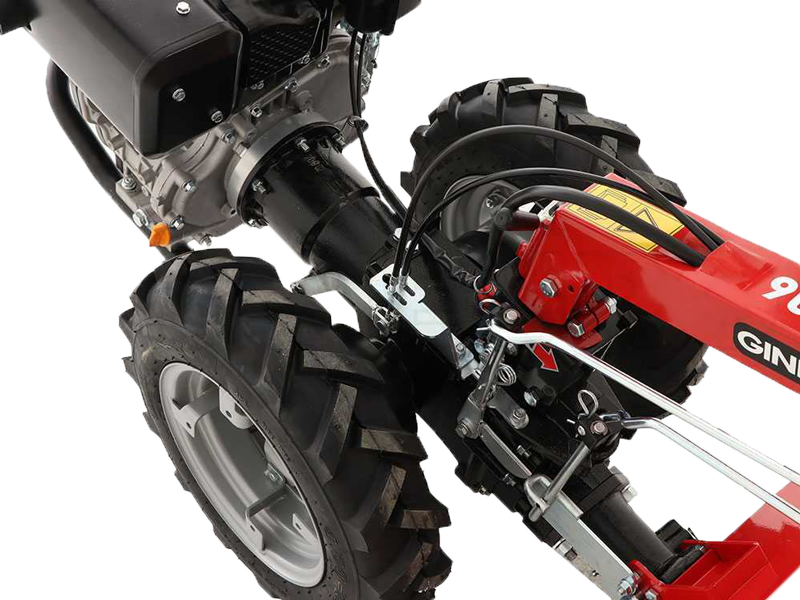
7. The gears
The number of gears on a two-wheel tractor is a very important aspect in assessing the versatility of the machine: the more the gears, the greater the work flexibility offered by the machine.

Having more gears available means you can adapt the speed of the two-wheel tractor to the terrain you are working on: if the soil is soft, you can use the higher gears and move more quickly; on the other hand, if the soil is hard, you will need to move at a slower speed by engaging the lower gears.
The reverse gear on light series two-wheel tractor (not multitool) can only be used when steering the machine and not during soil working.
Multitool and reversible two-wheel tractors can have more than one gear both forward and reverse: in this case, the reverse gears should not be considered as reverse gears but as forward gears when the machine is operated in reverse mode.
Below is an outline of the various combinations that exist (in a reduced form compared to that already seen in the section on robustness) encompassing the size of the two-wheel tractor, type of transmission and number of gears:
- Light series (NO multitool)
Belt and chain drive
Gearbox with 1 or 2 forward gears (+ reverse) - Small series (multitool)
Belt or gear drive or gear transmission in oil bath
2 or 3-speed gearbox (1 or 2 in standard position + 1 in reverse position) - Medium series (multitool)
Gear transmission in oil bath
3-speed gearbox (2 in standard position + 1 in reverse position) - Medium/heavy series (multitool)
Gear transmission in oil bath
5-speed gearbox (3 in standard position + 2 in reverse position) - Heavy series (multitool)
Gear transmission in oil bath
6 or 7-speed gearbox (3 or 4 in standard position + 3 in reverse position)
Note: the fourth gear can only be used in vehicle travel mode, in fact, when activated, the accessory cannot be engaged.
8. Additional functionalities
8.1 Power take-off quick coupling
Multitool two-wheel tractors (usually those with gear transmission in oil bath) always have a power take-off (PTO), i.e. a coupling located at the rear where accessories are attached.
On some machines, this PTO is equipped with a quick coupling that makes it easier and faster to attach and detach the accessory.

Power take-off with quick coupling 
Power take-off with quick coupling
8.2 Electric starting
Another useful feature found on some models is the electric starting system, which allows the two-wheel tractor to be started very easily, as opposed to the classic recoil start (with rope), which is still the most common system on the market.
There are two types of electric starting, depending on the battery:
- with key in case of lead-acid battery
- with power button in more advanced models equipped with lithium-ion battery

Lead-acid battery 
Ignition key

Lithium-ion battery 
Power button
8.3 Differential lock
Another feature that increases the operating comfort of the two-wheel tractor is the differential lock. This is a device that allows the two wheels to have a different number of revolutions from each other, making it easier to steer. Basically, the differential transfers more torque to the wheel with greater traction, which, in the case of steering, is the inside wheel.
This feature is only available in certain models of two-wheel tractors, usually those belonging to the heavy series.
9. The engine
As far as the engine situation is concerned, there is a very strong analogy between two-wheel tractors and garden tillers (we will therefore limit ourselves to reiterating what has already been said in the related section included in the best garden tiller purchasing guide, but specifying any possible differences).
All the best heavy-duty two-wheel tractors are equipped with an engine manufactured by globally renowned brands such as Honda, Briggs&Stratton, Lombardini, etc. The main advantage of a two-wheel tractor with a quality engine is undoubtedly its reliability.
When, on the other hand, we are confronted with (re)branded engines that bear the name of the same machine manufacturer (such as McCulloch, Hyundai, etc.), we must be aware that they are Chinese engines, i.e. low-cost engines that must all be placed on the same level.
But let’s take a brief look at which are the best engines for a two-wheel tractor:
- Honda
The engines by Honda (undoubtedly one of the best known Japanese manufacturers) represents an absolute reference in terms of quality and reliability, and guarantee high performance on petrol two-wheel tractors, even better if combined with a made in Italy gearbox.
- Briggs&Stratton
Briggs&Stratton engines are made in the USA and ensure optimal and long-lasting operation. They are mainly fitted on small/light series petrol two-wheel tractors.
- Kohler
Kohler engines are also made in the USA and represent a benchmark in terms of reliability for petrol engines on two-wheel tractors.
As for Kohler diesel engines, they are actually produced in Italy by Lombardini (which became part of the Kohler group several years ago).
- Subaru
Subaru engines (also made in Japan) are a mark of quality, high technology and innovation with low fuel consumption. They can mainly be found on small/light series petrol two-wheel tractors.
- Loncin
Loncin engines are Chinese, but their reliability and quality is self-evident. Nowhere near other made in China engines. They are quite versatile, and can be found in both small/light series and heavy duty petrol two-wheel tractors.
- Lombardini
Lombardini engines are the most prestigious and, although they are also the most long established, to this day they still have a reputation of their own.
They are undoubtedly associated with reliability and high performance and are the most sought after when it comes to choosing a heavy-duty diesel two-wheel tractor.

Honda GX390 engine 
Briggs&Stratton 675iS engine 
Kohler XT-7 engine

Subaru SP170 engine 
Loncin 441cc engine 
Lombardini 15LD440 engine
10. Working accessories
The availability of accessories that can be used in a multitool two-wheel tractor varies from model to model.
In addition to the tiller (which is standard on all two-wheel tractors) we can find the following accessories:
Accessories for use in standard position
Furrower
The furrower is used to create grooves in already tilled soil, for example to open small drainage ditches or to tamp crops in rows.
In the case of a rear tine furrower, the attachment is not mounted in place of the tiller, but is attached to the rear of the tiller itself (so that two types of work can be carried out at the same time, i.e. milling and immediate furrowing).
Plough
The plough is used to break up and overturn the soil in order to prepare it for sowing or subsequent tillage. This operation also allows weeds and previous crops to be buried, which helps them decompose.
Harrow
The harrow is used after ploughing and can have various functions in preparation for sowing: levelling out loose soil, breaking up fine surface crusts of soil, breaking up turf, burying seeds and fertilisers.
The rotating harrow is mainly used to break up particularly compact clumps of soil.
Potato plough
A potato plough is an accessory used to dig potatoes (and other tubers) out of the ground so that they can be easily harvested.
Lawn scarifier
The scarifier is used to remove moss and dead grass from the lawn, which prevents nutrients (such as water and nitrogen) from entering the soil. In addition to scarifying, it can also be used to spread seed and fertiliser and can be ballasted to penetrate deeper into the soil.
Trailer
The trailer can be connected to the two-wheel tractor to transport material (e.g. freshly cut grass) for short distances. It is equipped with a seat for the operator.

Furrower 
Rear tine furrower 
Plough

Three-toothed harrow 
Potato plough 
Trailer
Accessories for use in reverse position
Rough cut mower
The rough cut mower is a useful accessory especially for maintenance and cleaning operations, as it finely grinds and shreds the grass and provides great results.
Sickle bar
The cutter bar is used to mow the grass while leaving it undamaged. A particular application of this accessory is to make hay that will then be used as feed for livestock.
Rotary scythe mower
The rotary scythe mower transforms the two-wheel tractor into a self-propelled scythe mower, to cut all kinds of grass (tall or low), allowing it to be recovered for livestock feeding.
Flail mower
The flail mower (or flail mower with knives rotor) is used for clearing uncultivated areas as it can remove large masses of grass, undergrowth and brambles from, for example, orchards, vineyards and olive groves.
Garden sweepers
The garden sweeper is ideal for cleaning streets, pavements, parking areas, exterior areas, etc. and can also be used in winter for snow clearing.
In some models, the garden sweeper can also be equipped with a collection box.
Snow blower auger
The snow blower auger is a useful accessory for clearing snow from the streets of villas, houses, etc. The snow collected by the auger is “discharged” away at a distance of a few metres through a discharge chute.
Snow plough
The snow plough is also used for clearing snow from roads, but unlike the snow blower auger described above, it does not “discharge” the snow at distance, but drags it along.
It can also be used on sand.

Rough cut mower 
Sickle bar 
Flail mower with knives

Garden sweepers 
Snow blower auger 
Snow plough
11. Garden tiller vs two-wheel tractor
In the introductory section of this guide, we have already made an initial review of the main structural differences between these two machines. In this concluding part, we want to further discuss this topic, albeit schematically.
So let’s find out the differences between garden tillers and two-wheel tractors by comparing the main features of each:
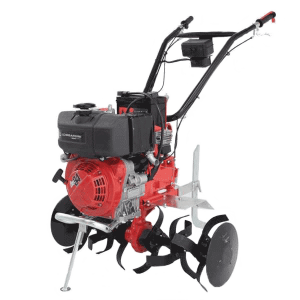
Garden tillers
- can work the soil in depth
- can work on very hard and poorly cultivated soils
- the tillers can reach a maximum width of 100 cm
- it is suitable for both small and large working extensions
- performs almost exclusively the milling function
- works in one direction only
- can be electric, battery-powered, petrol or diesel
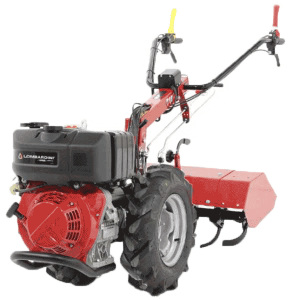
Two-wheel tractor
- works more on the surface and carries out a refining operation
- can only work on soft, already tilled soils
- the tillers can reach a maximum width of 80 cm
- is mainly suitable for vegetable patches, specific crops or within rows
- it can be multitool (by replacing the tiller with other accessories)
- it can be reversible and work in both directions
- it runs on petrol or diesel only
This guide has been specifically drawn up as a useful reference to help you choose the best two-wheel tractor for your needs.
If you have realised that what you are looking for is not a two-wheel tractor but a garden tiller, we suggest that you ckeck our Purchasing Guide for the Best Garden Tiller.
If instead you wish to find out more about the main differences between garden tillers and two-wheel tractors, we recommend you read the specific feature article.



